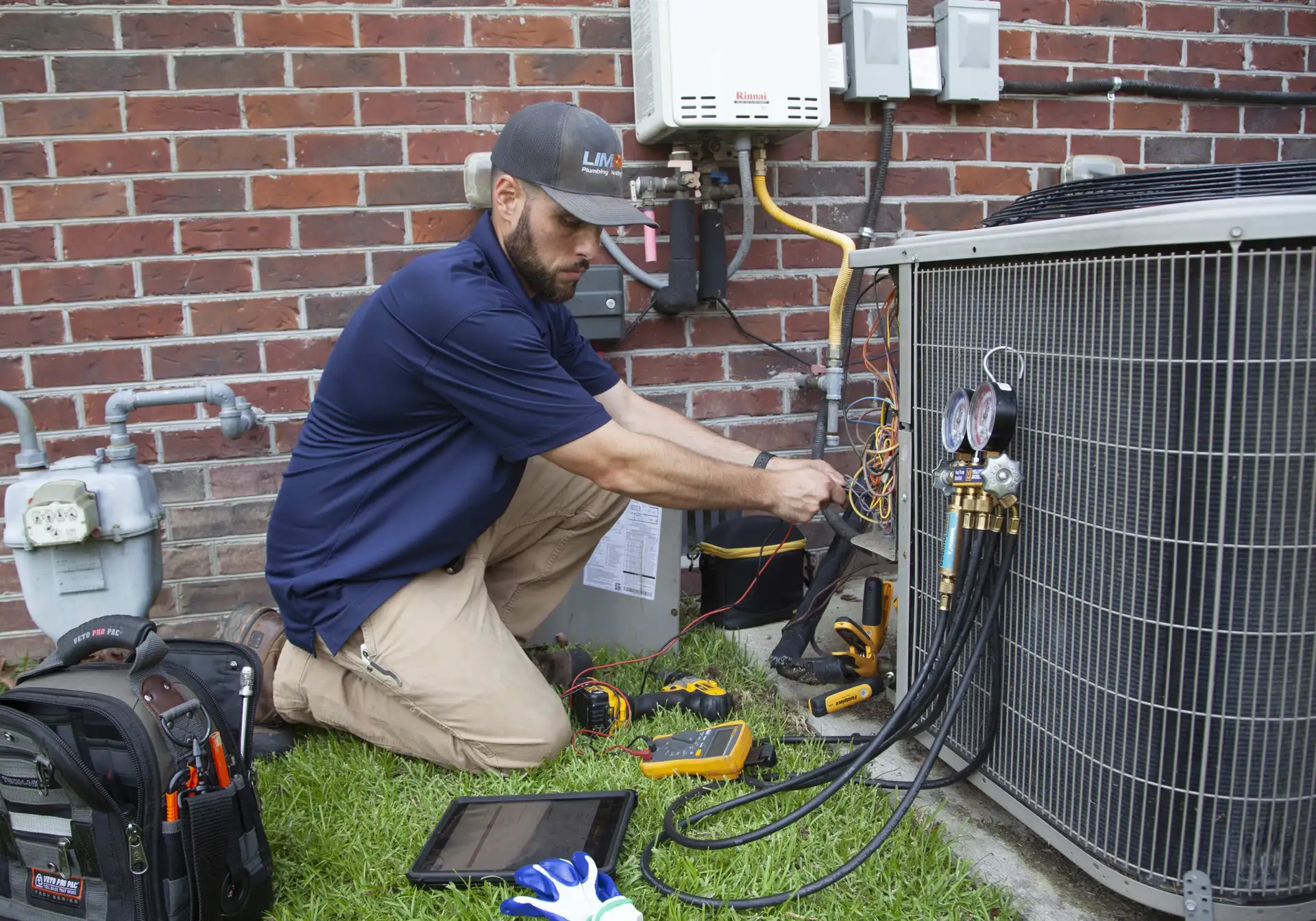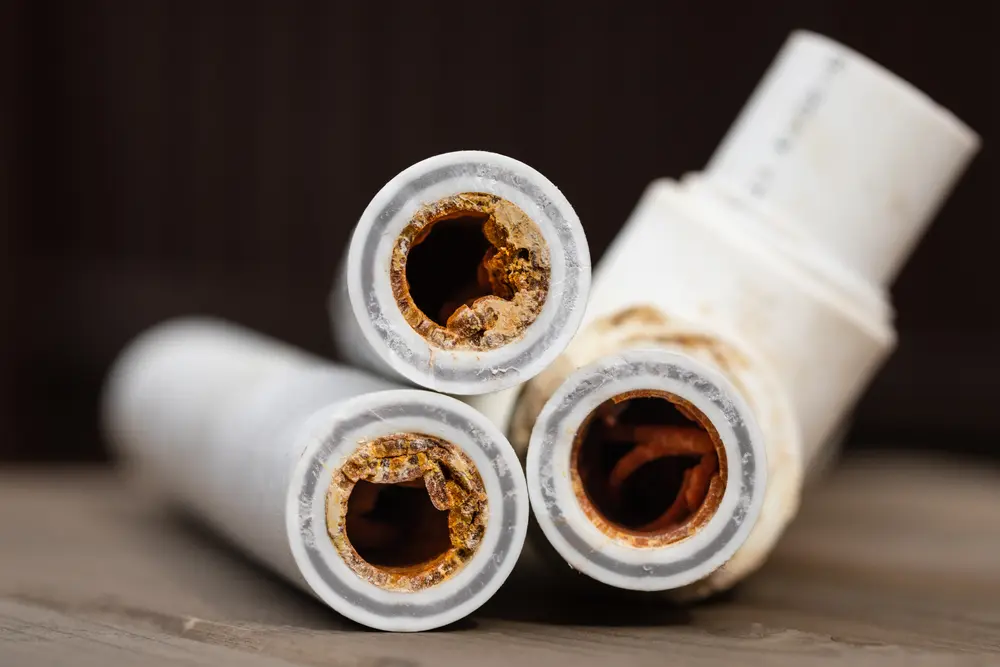Plumbing & HVAC Tips for Older Homes


Many people are drawn to the unique and historic architecture of older homes. These homes may be beautiful, but buyers must be prepared for the potential issues they can have. Many older homes were constructed with materials that are now known to be ineffective or dangerous, and this can manifest in plumbing problems. Additionally, when you buy an older home, you might not know when the HVAC system was installed, so you may experience heating and cooling issues as well.
Here is how to identify plumbing and HVAC problems in your older home.
5 Common Plumbing Problems in Old Homes
Plumbing problems in older homes are generally caused by old building materials and wear and tear.
Here are five common issues with various components of your home’s plumbing system:
Old Piping Materials

- Copper pipes with lead solder: If your home was built before the U.S. banned lead in 1978 or you haven’t refitted your pipes since then, you should get your pipes refitted or replaced. Lead could be leaching into your water, and it can cause gastrointestinal issues, fatigue, memory loss, irritability, and harm to infants and children.
- Galvanized pipes are rusted: After lead was banned, galvanized steel became the most popular material for home plumbing systems. The coating of zinc on galvanized pipes becomes highly susceptible to corrosion as it wears down, which can allow rust to seep into your water or cause the pipe to crack. If you notice leaks in your home or your drinking water changing colors, you might have galvanized pipes and should consider updating them.
- Polybutylene pipes: Polybutylene pipes were often used in homes built in the 1980s and 1990s. This material is not good at withstanding the oxidants and chemicals used to purify public water lines, and it shows similar issues to galvanized pipes, including brittleness, flaking, cracking, and a shorter lifespan. If your house was built during this time and has frequent leaks or plumbing issues, your home may need repiping.
Outdated or Worn Water Fixtures
In addition to having old pipes in your house, outdated or overly worn water fixtures can worsen plumbing problems in old homes. Over time, limescale builds up in old water faucets, resulting in issues with water pressure, water quality, and leaking. If you notice that your water bills have suddenly increased or that there is an unpleasant odor coming from your faucets and showerheads, it might be time to upgrade them.
Damaged Sewer Lines
Sewer lines are often the source of plumbing problems in older homes, especially ones that have been in use for a long time. They’re vulnerable to clogging and small leaks, and moisture from these leaks can attract shrubbery and trees with root systems. As the roots grow around and even in the sewer line, issues like clogs and leaks get worse.
Pipe Bellies


As homes naturally shift and slope over time, pipes can develop what is known as “pipe bellies” or a negative slope in your water line. Pipe bellies can cause clogs, leaks, and sediment buildup, which can eventually lead to the accumulation of toxic wastewater, flooding, and property damage. If you’re experiencing backups and slow drains or notice a sudden patch of green grass in your yard, your pipes might have bellied, and they need to be fixed promptly to prevent further issues.
Installation or Repair Issues
Having constant plumbing problems is a sign your system was installed or repaired incorrectly. In older homes, you may not know who installed your system, how they did it, and when they did it. Plumbing issues in these homes need to be handled by experts who are familiar with older plumbing systems. Be sure to hire plumbers who use modern techniques and have experience working in older homes.
When to Replace Your Old HVAC System
The average life expectancy of an HVAC system is 10 to 15 years, depending on the brand and the climate. When your system reaches this age, you’ll start to notice the following signs, which can indicate it’s time for a replacement.
Decline in Efficiency
The components of your AC will wear down over time, leading to decreased efficiency. Since the average life of an air conditioner is about 10 years as well, you should have it inspected at the 10-year mark to identify any major problems and consider whether replacement might be a cost-effective solution.
Duct Leaks
Ducts need to be re-sealed every 15 to 30 years, depending on your specific system. Even small duct leaks can greatly reduce your AC’s efficiency. As a result, it has to work harder to cool the home and sustains more damage from wear and tear than it should. Sealed ducts help your HVAC unit last longer.
Thermostat Malfunction


Most thermostats last an average of 10 years before they need to be replaced. Issues with your thermostat can make it seem like your HVAC unit is malfunctioning when it isn’t.
When you encounter issues with your thermostat, you should consider upgrading to a smart or Wi-Fi version. These thermostats help you save money by learning how you use your heating and cooling system and adjusting accordingly.
Issues With the Blower Motor
Blower motors tend to last 10-15 years, which coincides with the average lifespan of an overall HVAC system. When blower motors aren’t working, there’s no forced air coming through your vents.
Poor Airflow
If your unit has poor airflow, it may use more power than needed, which can result in tripping the circuit breaker or blowing a fuse.
Your air filters should be changed every one to three months, and your ducts should be cleaned every three to five years to reduce air resistance. You should also be getting regular maintenance and inspections. During these visits, your technician will tune up the entire system, clear away debris, and identify problems before they require more serious repairs.


Contact LimRic Plumbing, Heating & Air in Charleston, SC
The highly trained technicians at LimRic are here for all your plumbing and HVAC needs, whether you have an older home or a newly built one. We provide comprehensive services to keep your home comfortable, energy-efficient, and safe, including:
We provide same-day services with a Quick Comfort guarantee—if we can’t fix your HVAC or plumbing issue on the first visit, we’ll provide you with a temporary replacement until we can.
Contact us to get a free estimate or schedule a service today.











